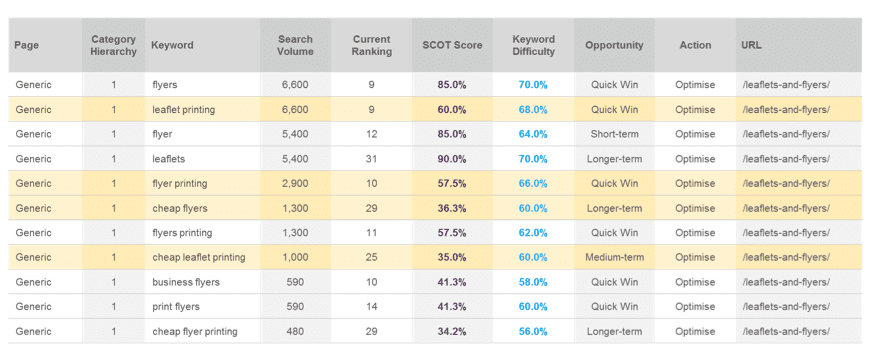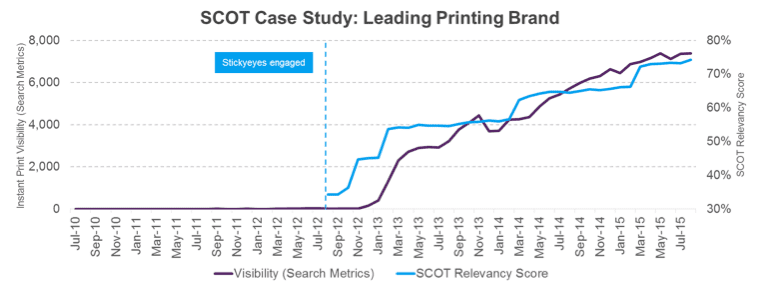Do you know what pages are drawing valuable traffic and which aren't pulling their weight?
For all of the discussion about creative content marketing campaigns, and for all of the plaudits that they attract, there is an elephant in the room that many brands are ignoring. These brands are investing significant sums in producing campaign-led creative content, but it is the content that they already have that is arguably where that investment should be focused.
Functional content, on-site content, static content or whatever term you prefer to use, is the lifeblood of your digital presence. It is what drives your search visibility, guides your users through the customer journey and reflects your brand personality. But it is all too often neglected.
As search engines continue to change their approach to assessing on-page content, many organisations fail to review and update their content to keep pace with the ever changing, and ever-growing list of demands. There are good reasons for this; resource, internal conflicts, sign-off processes and compliance are all common challenges, but it is a fundamental part of why many brands aren’t achieving the visibility that they expect.
It’s time to change that. And we need an objective, analytical approach in order to achieve that change.
Do you want to be relevant?
Practically anybody within search marketing will talk at lengths about the importance of relevancy, but what do we actually mean by the term?
To be genuinely relevant, it isn’t enough to simply answer the original query, but to answer the queries that are likely to follow. Think of most consumer interactions, particularly those that are more considered, and they are rarely completed on the basis of just one question or one answer. They are completed on the basis of multiple questions, and being relevant means having the answer to each and every one.

Functional content, the content which sits on your landing page and guides the customer through their journey, plays a key role in not only delivering your user experience, but also in securing that all important search traffic. The problem is that objectively quantifying how effective this content is can be exceptionally difficult, and the problem is particularly acute for those brands with vast, complex websites.
There are a plenty of both tangible and intangible measurements for successful content, but this doesn’t necessarily confirm that content is useful, relevant for the keywords that matter to a brand or of sufficient ‘quality’. You could, for instance, use social shares as a measurement of quality content but, in doing so, it’s likely that you’ll reach the conclusion that your content plan needs to change to incorporate more listicles with pictures of cats. Providing content that your audiences will engage with is undoubtedly a starting point but, and I hate to break this to you, human beings may not always the best judges of quality.
The science of content
These difficulties were what prompted Stickyeyes to develop a bespoke content optimisation tool, with the aim of finding a way to insightfully and objectively appraise a domain’s on-page content, much in the way that a search engine would do. In essence, we wanted to understand the science behind content.
Affectionately known as SCOT (Stickyeyes Content Optimisation Tool), what we developed is a tool that can algorithmically appraise a domain’s on-site content based on a number of known ranking factors. The idea is to provide our content marketing and SEO teams with an indicative review of a site’s on-page content, allowing us to quickly identify potential opportunities and to focus our efforts on the areas that are either in the greatest need of improvement, or that are likely to deliver the greatest impact.
The factors we consider include technical elements, such as keyword coverage, meta data and the use of header tags, as well as engagement factors for which there is evidence of a correlation with higher search rankings – factors such as bounce rate, time on page, social engagement and brand awareness for example.
The table below, which looks at the site content for a major printing brand, is indicative of the type of output that the tool provides, and how we can then use that data to frame and prioritise our digital strategy.

What we can see clearly is that whilst the brand in this example does have some strong content optimisation scores, in excess of 85%, there are a number of revenue-driving keywords for which the domain scores poorly. By looking at these low scores and the keyword difficulty of each keyword (which is indicative of how competitive that search term is), we can start to very quickly identify key areas for improvement, to identify what (if any) remedial action needs to be taken, and to prioritise these actions.
Of course, any content appraisal and audit needs to have a degree of human intervention, but what this algorithmic approach does is allow us to save significant resource by automating large parts of the process. What may often take a significant degree of human resource can now be run automatically, with a clear and objective score attributed to each keyword and URL, that then informs the human element of the process. In essence, it answers the age-old question; ‘where do I start?’.
The impact on search
We have been using this approach for a number of brands, many of which are in highly competitive sectors, and what we have found is that as we continually work on improving our content scores within SCOT, we have experienced increased visibility within organic search.

Of course, it isn’t possible to isolate the impact of improved content from the other areas of activity undertaken to improve search performance, but it does demonstrate a strong correlation between the quality of on-page content and search rankings.
And it is important to stress that this scientific approach to content auditing should not be confused with a ‘scientific’ approach towards content creation and what we are not looking for here is to turn content into a “box ticking” exercise. Content is still very much about providing value to the end user and delivering the best possible experience, but what you should be doing is looking to incorporate the right technical aspects into your content as you deliver the best possible user experience. The easiest way to think about this is “making the user smarter”; provide something of value to the user that they didn’t know before, and that will guide them along the customer journey.
How relevant are you?
In developing a content marketing strategy that establishes your brand as an authority, it is important to understand where your brand is currently serving its strongest content, and where it is potentially lacking in its coverage of a particular topic or issue. It is important for any brand to speak with the necessary gravitas across all its core service offerings.
In order to help brands achieve this, Stickyeyes has launched a free-to-access version of our Content Optimisation Tool. This tool, which provides a free content report of your website for the keywords most relevant to your brand, provides an objective score for your content, and ranks this against your competitors.
You can view the report now

Michael is an experienced content marketer and digital journalist, having previously worked for both online and offline publications including Teamtalk Media Group and Newsquest Media Group. Michael has worked on a number of award-winning projects for leading international brands and has been published in several major publications, including Econsultancy, Marketing Magazine, Brand Republic and The Drum.





 Michael is an experienced content marketer and digital journalist, having previously worked for both online and offline publications including Teamtalk Media Group and Newsquest Media Group. Michael has worked on a number of award-winning projects for leading international brands and has been published in several major publications, including Econsultancy, Marketing Magazine, Brand Republic and The Drum.
Michael is an experienced content marketer and digital journalist, having previously worked for both online and offline publications including Teamtalk Media Group and Newsquest Media Group. Michael has worked on a number of award-winning projects for leading international brands and has been published in several major publications, including Econsultancy, Marketing Magazine, Brand Republic and The Drum.


